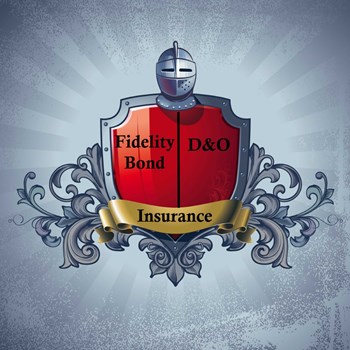
You can’t underestimate the value of insurance. In a simple analogy, operating a business—or the day-to-day business of a co-op or condo—without adequate insurance coverage is a lot like skydiving without a parachute. Needless to say, it’s a risky proposition.
The insurance industry spreads risks from the individual to the larger community, and provides an important source of long-term finance for both public and private sectors. The industry may also help eliminate risks, for example, as when fire insurance underwriters demand implementation of safe practices and/or the installation of hydrants and extinguishers in high risk areas.
As society has changed, the insurance market has adapted products and services to meet changing needs and to minimize the risk of doing business in today’s marketplace. The Internet makes shopping and comparing insurance options easier than ever before, but when a condominium board or homeowners association goes shopping for insurance they may well want—and need—to start the protection at the board level.
Getting Covered
In September 2012, new Federal Housing Administration (FHA) regulations were introduced that pertained to all new and established condominium projects with 20 or more units. Those properties are now required to carry fidelity bond insurance to protect their board and other building administrators; a policy may be expanded to cover the property management firm as well.
Ed Mackoul, CIC, is president of Mackoul & Associates, Inc., which has offices in Island Park, and Old Bridge, New Jersey. He explains the new FHA regulations in simple terms. “Fidelity bond provides coverage for theft by a board member or employee, of funds or business personal property. The policy can usually be endorsed to cover acts of the property management firm as well.”
The good news on fidelity bond insurance is twofold, the protection and the cost. Most policies average less than a $1,000 annually. Mackoul explains the cost is based on different factors, such as the limits of coverage, number of directors and officers, and proper controls the insured has in place. “While premiums may be as low as $200, a typical policy with a limit of $250,000 will be approximately $600-$800.” Mackoul points out the FHA requirement for minimum coverage is at least three months assessments plus reserve funds.
Kevin Davis, the president of nationwide insurer Kevin Davis Insurance Services, based in Los Angeles, emphasizes the need for fidelity or crime insurance. Board members are volunteers, he says, and they may not understand the legalities or nuances of handling millions of dollars in funds.
“Living in community associations, there is little oversight for people handling funds—even the reserve account funds, which should never happen,” he states. “It is important to have a comprehensive crime policy that provides the best protection for the community association and the property manager.”
Usually, most fidelity bond claims allege some type of economic loss. Some crimes happen in plain sight, and then in retrospect everyone feels a bit foolish for not noticing. Davis offers an amusing take of this type of criminal activity when he shares his “wheelbarrow story.” He tells the story of an employee who left the job site every day with a wheelbarrow full of sawdust. Certain he must be stealing something hidden under or related to the sawdust, those in charge searched the sawdust but never found anything. When the employee was safely retired, he admitted to stealing—not the sawdust, but the wheelbarrows!
Additional Coverage Requirements
While fidelity bond insurance goes a long way towards protecting a board and a community, Directors and Officers insurance (D&O) is a necessary addition to any community insurance package.
“D&O Insurance provides coverage for the decisions the board of directors make on behalf of the shareholders and unit owners,” states Mackoul. “Not everyone is going to be happy with the decisions they make and can and will sue the board members for breaching their duty.”
Typical D&O claims may include charges of discrimination, failure to follow association rules or governing documents, failure to follow state law, failure to use good judgment, or misuse of association funds.
Many claims are driven by emotions and no financial loss is alleged. Davis shares a hypothetical situation of an emotionally-based conflict that could result in a lawsuit. Let's say a resident has a potbellied pig as a pet. The documents allow pets but the board states there is a violation of the documents because a potbellied pig is technically not a pet: It’s breakfast! The unhappy resident files a claim against the board for breach of fiduciary duty and harassment.
“Non-monetary damages claims have been the number one source of claims for community associations over my 30 years in this business. Fighting over the right to have a pet, your parking space, or the right to hang a flag in your front yard is a major problem and continues to be. This coverage is critical and must never be excluded or silent,” Davis notes.
Mackoul points out other typical issues where D&O claims may come into play. “Noise, subletting, and renovations claims would fall under D&O coverage.”
“D&O is peace of mind insurance,” says Davis. Community association board members make decisions, and problems arise when unit owners, other board members, renters, contractors, or management doesn’t like a decision the board made and files a claim. D&O insurance funds the defense and pays any settlement.”
Davis says it’s important to understand that there is no “standard” D&O policy. “They generally fall into two categories,” he explains. “Bundled D&O policies are usually added as an endorsement to the property and liability coverage. The cost is generally lower, but the coverage is very restrictive. A stand-alone D&O policy designed for community associations will extend coverage to volunteers, committee-members, community association managers and employees.”
And, one size will not fit all when it comes to D&O. Stand-alone D&O insurance is designed specifically for community associations. “It’s important to stay away from D&O policies not designed for community associations,” said Davis. He explains that for- profit corporations or not-for-profit D&O policies have specific exclusions that will eliminate coverage for many community associations because of an association’s unique exposures. Mackoul also points out the fact that a co-op is a business so policies and coverage needs will vary.
Mackoul agrees with Davis on the importance of stand-alone coverage. “The stand-alone policy is also broader than an endorsement in who it will cover. Usually they will provide coverage for the entity itself, the current directors and officers, as well as past and future boards.”
If a board is looking to contain costs, Davis and Mackoul recommend looking to deductibles and coverage options to reduce the overall cost but caution that associations must review individual policies with their insurance agent. That way, they can understand any risk they may not be insured against.
”The best way to keep costs low is to not have claims,” quips Mackoul. As there are several competitive programs in the market, shopping around is a good idea. Another excellent way for an association to keep premiums down is by good governance including following all state rules and the advice of professionals. D&O contracts are not standard, and it is important for clients to deal with a professional agent who is not only familiar, but also experienced in the D&O arena.
Follow Sound Advice
All experts agree, criminal actions are not protected and negligent actions will ultimately be decided by the court system in due legal process. In the event a decision is challenged as being made in “good” or “bad” faith, the insurance company will use claims examiners to investigate the loss.
In the event of a discrimination charge, Mackoul explains coverage remains intact until the allegation is proven or dismissed. If an allegation of discrimination is proven true, coverage would cease. If there is no D&O coverage, the association or co-op would be responsible for hiring an attorney and defending the suit, but protection for the board would generally be covered in the bylaws by an indemnification clause. The indemnification clause provides for the reimbursement of board member’s legal fees accrued as the result of a challenged decision.
Due to the increase in D&O claims, there is a real need for an association to choose only a very broad, comprehensive D&O policy, designed specifically for community associations. The old adage, about an ounce of prevention being worth a pound of cure, is certainly accurate when it is time to choose protection for the volunteers serving on an association board.
Operating a fair, open, and judicious board is the first line of defense against any lawsuit—and a good D&O policy and fidelity coverage can help provide the protection your community needs.
Anne Childers is a freelance writer and a frequent contributor to The Cooperator.






Leave a Comment